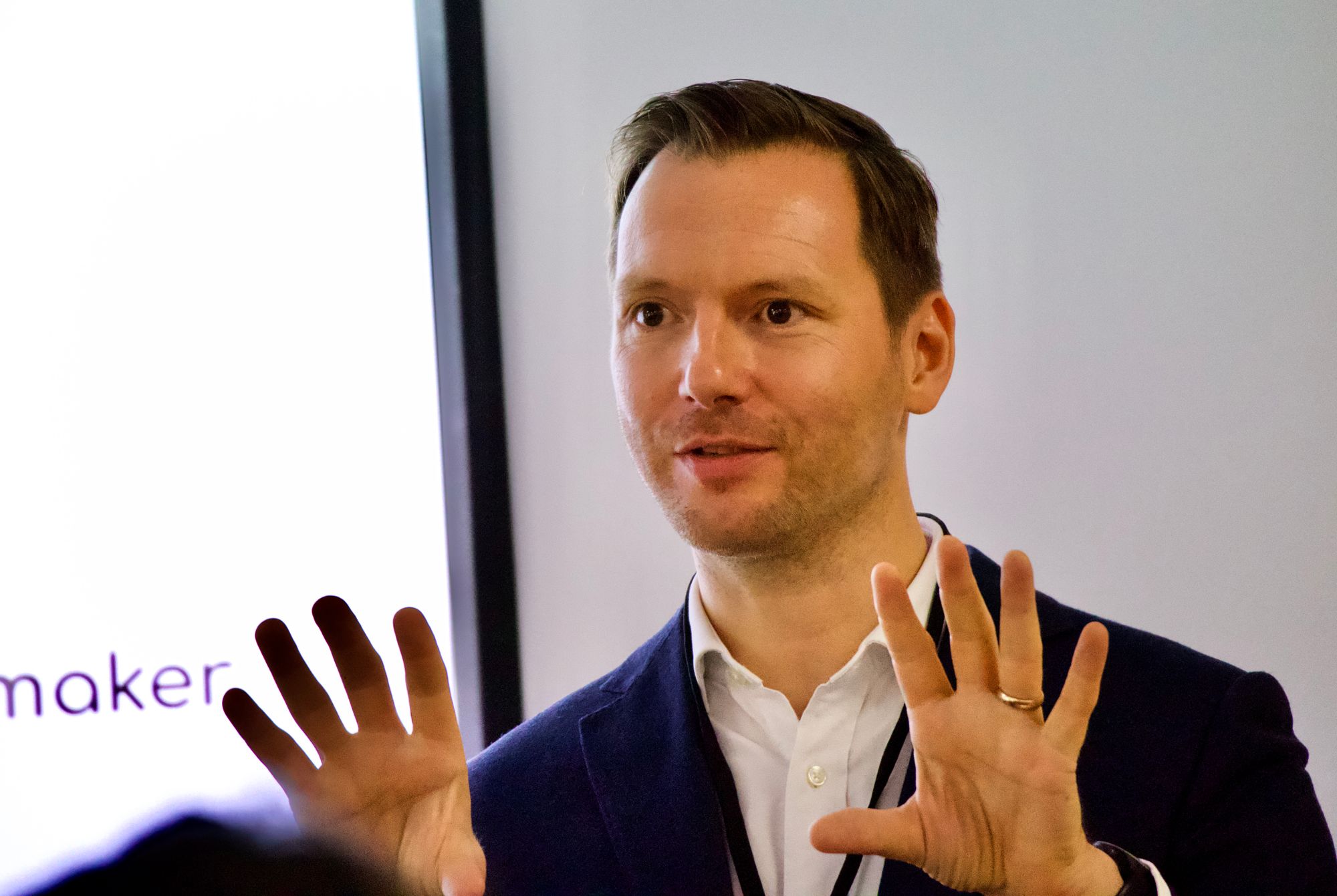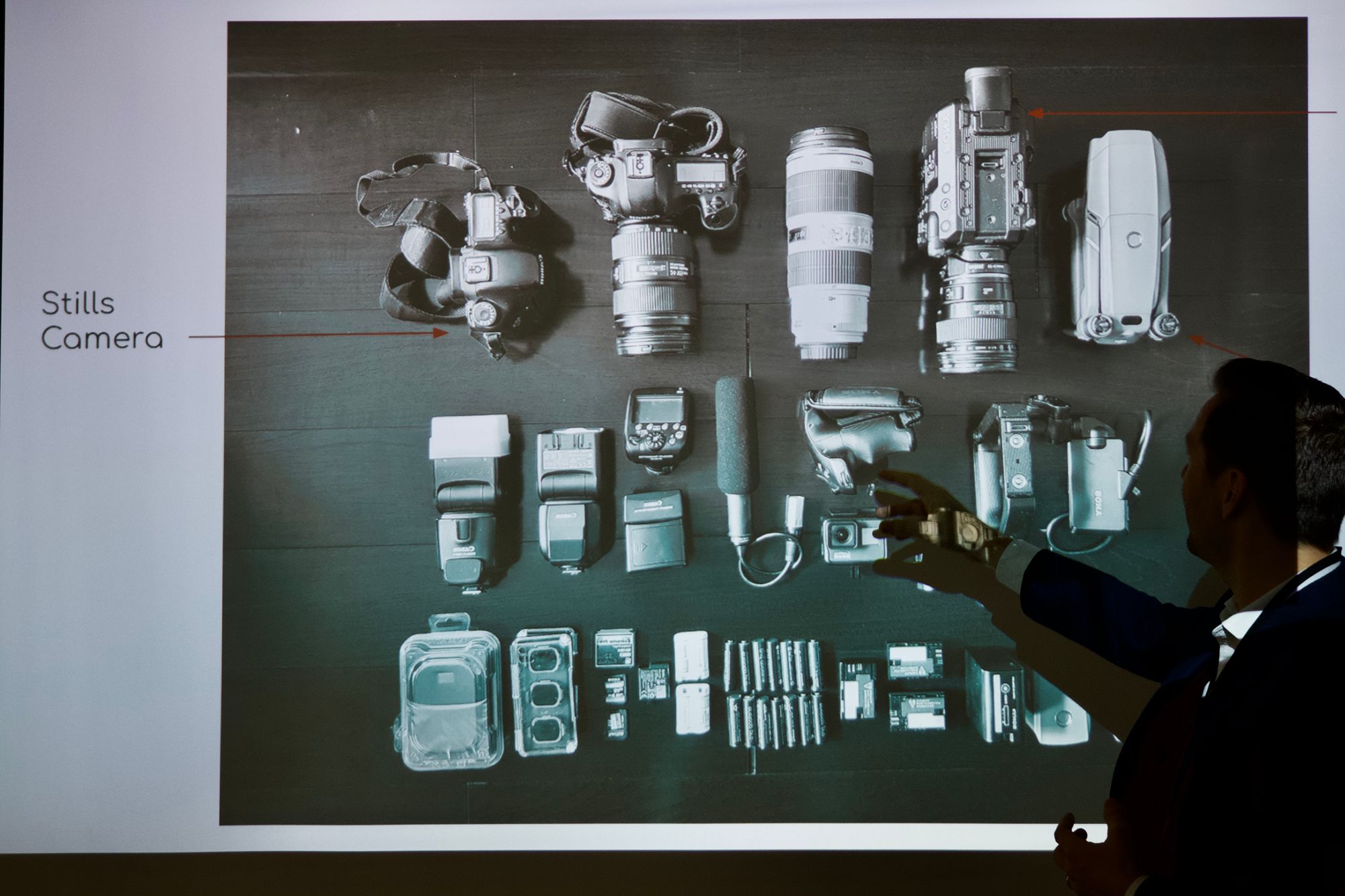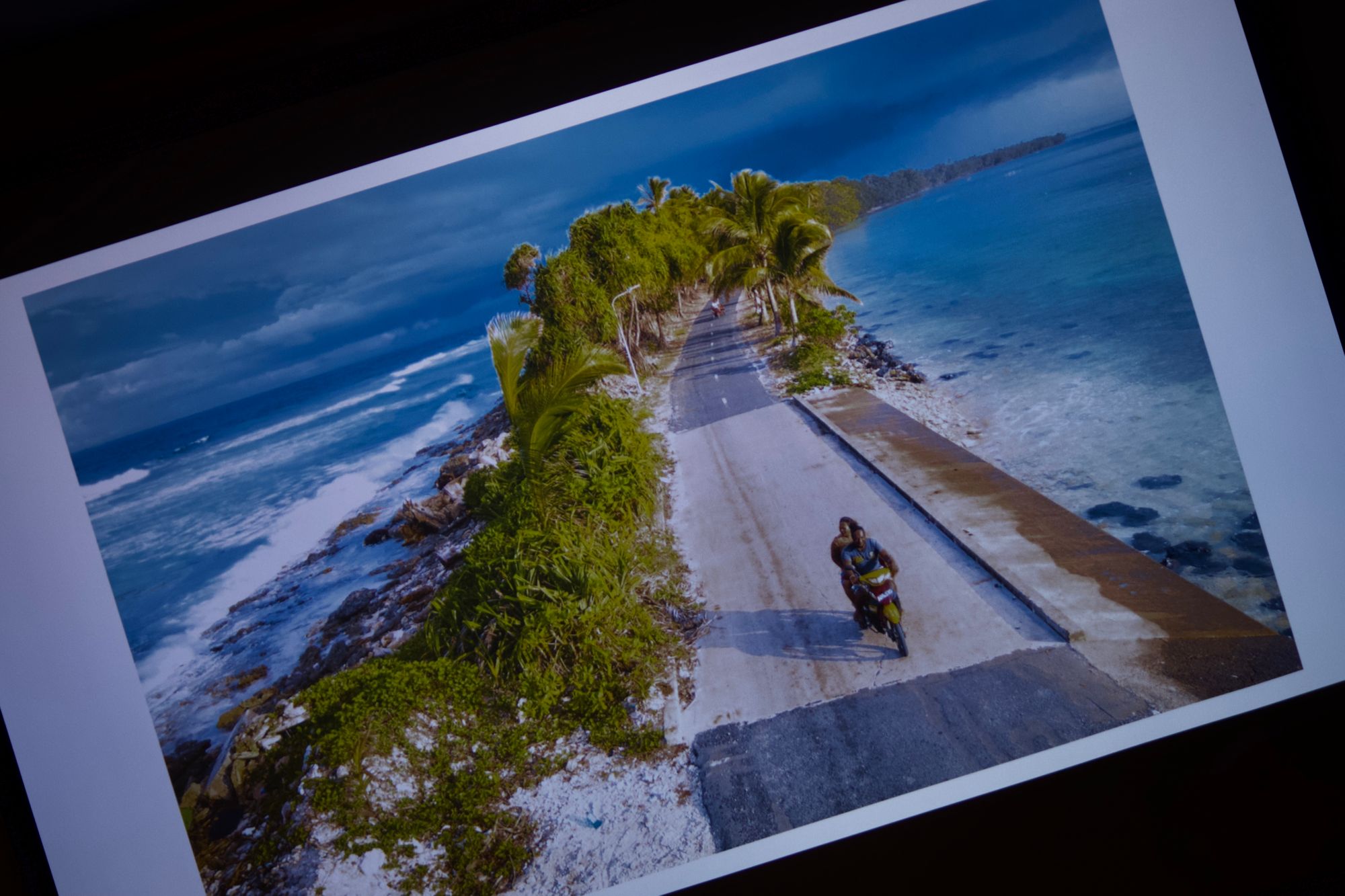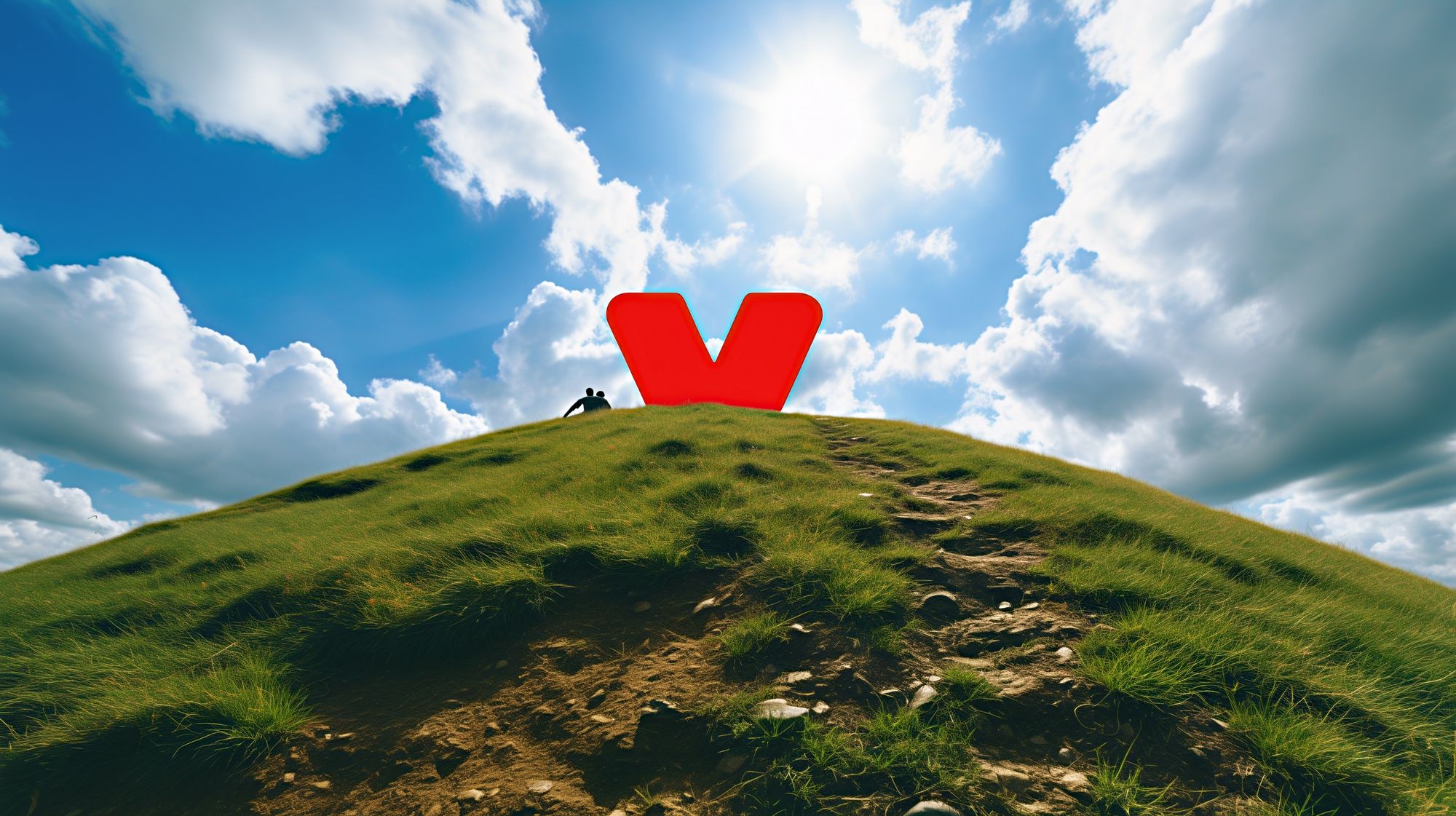
Using drones to document climate change
Sean Gallagher is documenting the climate crisis in places like Tuvalu, and drones are allowing him to get shots that have incredible impact on the reader. Here’s how he does it.
Photographer and filmmaker Sean Gallagher is a recent convert to drone journalism. He told the News Impact Summit in Birmingham how he's using in in his reporting on climate change.
Warning: Liveblogging. Prone to error, inaccuracy and howling crimes against syntax and grammar. Post will be updated.
Sean got his first drone three or four years ago. It as large, bulky and the image quality wasn’t great. He was waiting for the image quality to catch up.
Earlier in the year, he finally got one small enough to go in his kit bag - and with high enough quality for his work. It's the Mavic 2 Pro. He likes to have all his kit with him in his bag. It’s controlled from a device that plugs into your phone.

It’s size also means you can keep low profile - you look like a regular tourist, not a news cameraman.
Why would you use a drone? It gives you establishing shots - but it also gives you a unique perspective. It’s a very engaging way to get people's attention to the story you’re telling.
However, he’s been trying to move away from the generic establishing shot. He’s a photographer primarily and he wants to create arresting images that make people stop and feel something. It needs to be beautiful and engaging.
He always tries to frame people within the images, where he can.

He does deploy standard photographic techniques - like slow shutter speeds to blur motion in waves. He uses ND filters to reduce the light coming in, forcing the shutter speed drop. The drones are self-stabilising, and the camera is mounted on a gimbal.
The mindset for a drone photographer
The drone is just a camera. Use it like you would any other camera. Concentrate on the image - create something that is beyond what anyone could create by sending a drone up. Not many people do that.
His work looks at people within the landscape, t explore impact and issues of community. Tuvalu is a country people are already fleeing from - because the land is disappearing. There are abandoned homes there - and he’s captured images from above of children playing in them.
Half the job is being in the place, watching life and looking for the moment, the opportunity, something… You need to be there, aware and ready to capture it.
He got written permission from the government in Tuvalu to fly his drone whenever he wanted. He does his best to make people aware of the fact he's there and taking images. You can see the work that resulted on The Guardian and CNN.
Here’s an example of the video:
That video was used to sell a limited run magazine based on his work there.
Drone Risks
Every country has its own risks on where and when you can fly drones. People have been arrested for getting it wrong - and the UK has some of the most strict laws. You must check on the local drone laws before you start filming.
Sign up for e-mail updates
Join the newsletter to receive the latest posts in your inbox.










